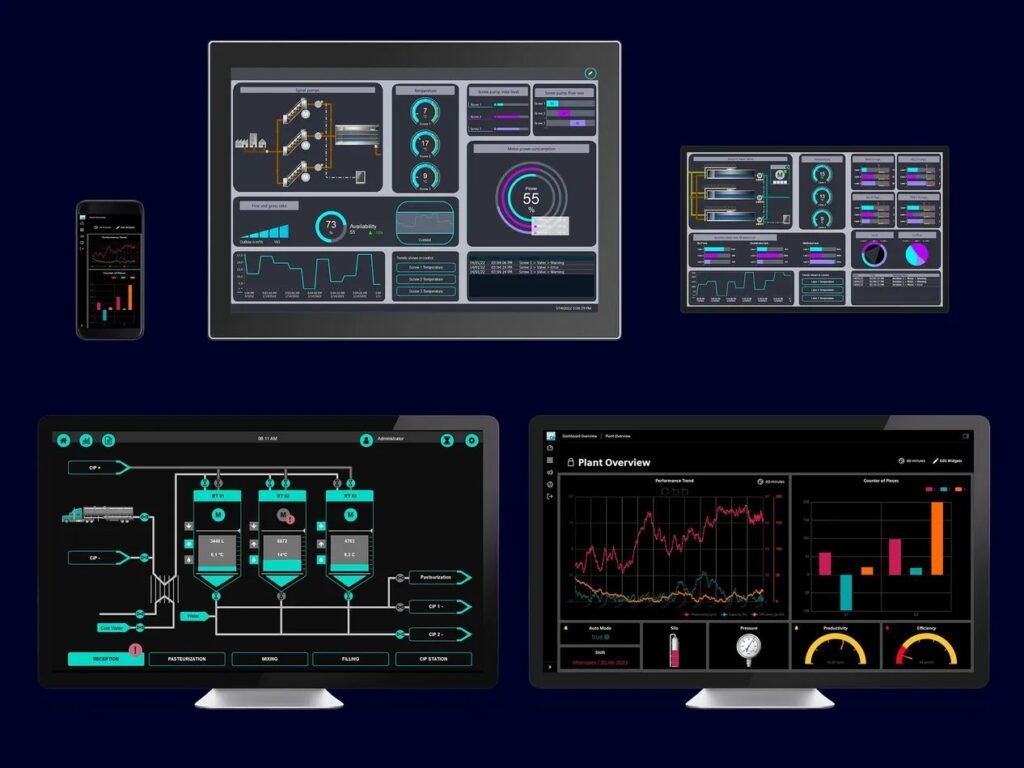By Muhammad Ibrahim
For decades, the word “automation” painted a picture of giant, expensive robots on a car assembly line, a reality far removed from the textile mills of Faisalabad or the pharmaceutical plants in Lahore.
That picture is now obsolete. Today, a silent revolution is underway, one driven not by massive robots, but by smart sensors, intelligent data, and the simple goal of making every single rupee of operational expenditure work harder.
This is the new face of automation. It’s less about replacing people and more about augmenting their capabilities. It’s about giving your managers, engineers, and operators the X-ray vision they need to see waste, predict failures, and guarantee quality before a single product leaves the factory floor.
At Bilal Switchgear Engineering Pvt Ltd, as an Authorized Siemens System Integrator, we see this transformation firsthand. The question our most successful clients ask is no longer, “Can we afford to automate?” but rather, “Can we afford not to?”
Myth vs. Reality: Automation for Pakistan
The primary hurdles for Pakistani industry are not unique, but they are acute: soaring energy costs, intense global competition on quality, and the constant pressure to reduce downtime. Traditional thinking tackles these with more manpower or stricter oversight. The modern approach embeds intelligence directly into the process.

Let’s break down the three core pillars of this practical, ROI-focused automation.
1. The Power of Sight: From Guesswork to Certainty
You can’t manage what you can’t measure. The foundation of all modern automation is visibility. This starts with advanced process instrumentation – sensors that act as the nervous system for your factory.
Consider a textile dyeing unit. For years, achieving the perfect color consistency across batches was an art, dependent on the experience of a master operator. Today, precise Siemens sensors for temperature, pressure, flow, analyzers, and pH can monitor every variable in real-time. The system doesn’t just follow a recipe; it ensures the conditions are perfect, every second.
• The Result: A 99.9% batch-to-batch consistency, slashing rejection rates for export orders. The “art” is now a repeatable, data-backed science. This isn’t about removing the operator; it’s about giving him a perfect set of eyes and an unerring memory.
2. The Engine of Efficiency: From Wasting Energy to Optimizing It
Once you can see everything, the next step is to control it with precision. This is where controllers (PLCs) and supervisory systems (SCADA) come in. But the single biggest impact we see is in energy management.
Energy is often the second-highest operational cost for local industries. Yet, most factories treat it like a fixed utility bill. With a system like the Siemens SIMATIC Energy Manager, you can see exactly which machine, which line, and which shift is consuming the most power.
• A Real-World Example: A client in the beverage sector ran three large compressors, believing all were necessary for their peak load. After installing a simple energy monitoring system, we discovered one compressor was running inefficiently, while the load could be met by two optimized machines for 90% of the day.
• The Result: By intelligently cycling the compressors and shifting specific high-load processes to off-peak tariff hours, they cut their electricity bill by 18% in the first quarter. The system paid for itself in under eight months. That’s not a cost; it’s an investment with a guaranteed, rapid return.
3. The Promise of Intelligence: From Reactive to Predictive
The final, most exciting frontier is using the data you’re collecting to predict the future. Every motor, pump, and valve in your facility generates operational data. Most of it vanishes into thin air. Digitalization is about capturing this data and listening to the story it tells.
Are a motor’s vibrations slowly increasing over time? That’s a clear sign of bearing wear. Is its temperature consistently higher than its twin on the next line? It could be heading for a failure.
Instead of waiting for a critical machine to break down on a Friday afternoon—halting production for the entire weekend—an intelligent system can flag the anomaly weeks in advance. It can automatically schedule maintenance during planned downtime.
• The Result: A shift from costly, chaotic reactive maintenance to low-cost, scheduled predictive maintenance. This simple change can boost plant availability by 5-10% annually, unlocking hidden production capacity without a single new machine.
The Human Equation: Creating System Supervisors
The fear that automation eliminates jobs is understandable but misplaced. It changes jobs. It automates the repetitive, strenuous, and mundane tasks, freeing up your skilled workforce to do what humans do best: solve problems, innovate, and manage complex systems.
An operator who once manually opened and closed valves becomes a technician who monitors an entire water treatment process from a central SCADA screen. A maintenance worker who used to react to breakdowns becomes a reliability engineer who analyzes data to prevent them. You’re not losing an employee; you’re upgrading their role and making their expertise more valuable.
The future of Pakistani industry hinges on our ability to compete on a global stage. That won’t be achieved by having the lowest labor costs, but by being the smartest, most efficient, and most reliable producers. The revolution is already here. It’s quiet, it’s data-driven, and it’s waiting in the signals your own factory is sending you.
The only question is, are you ready to listen?
